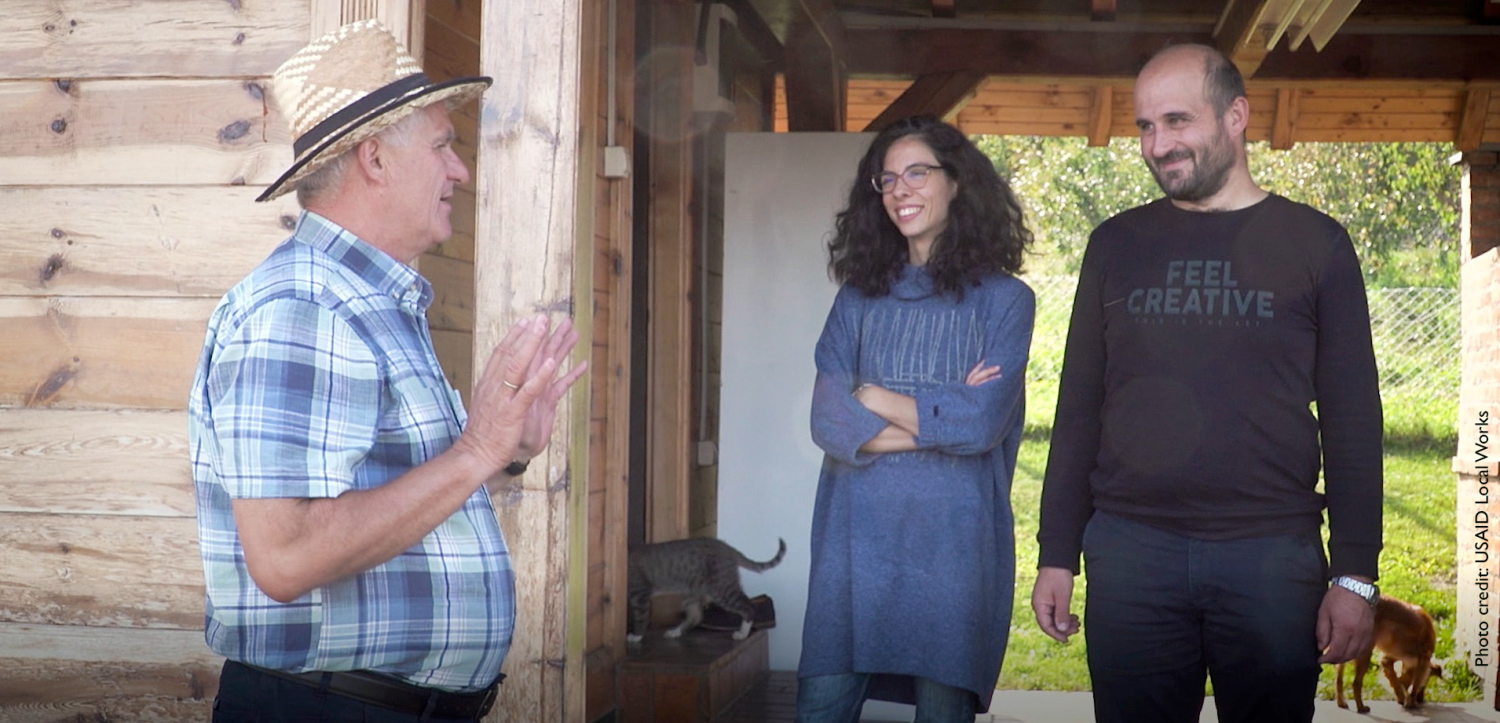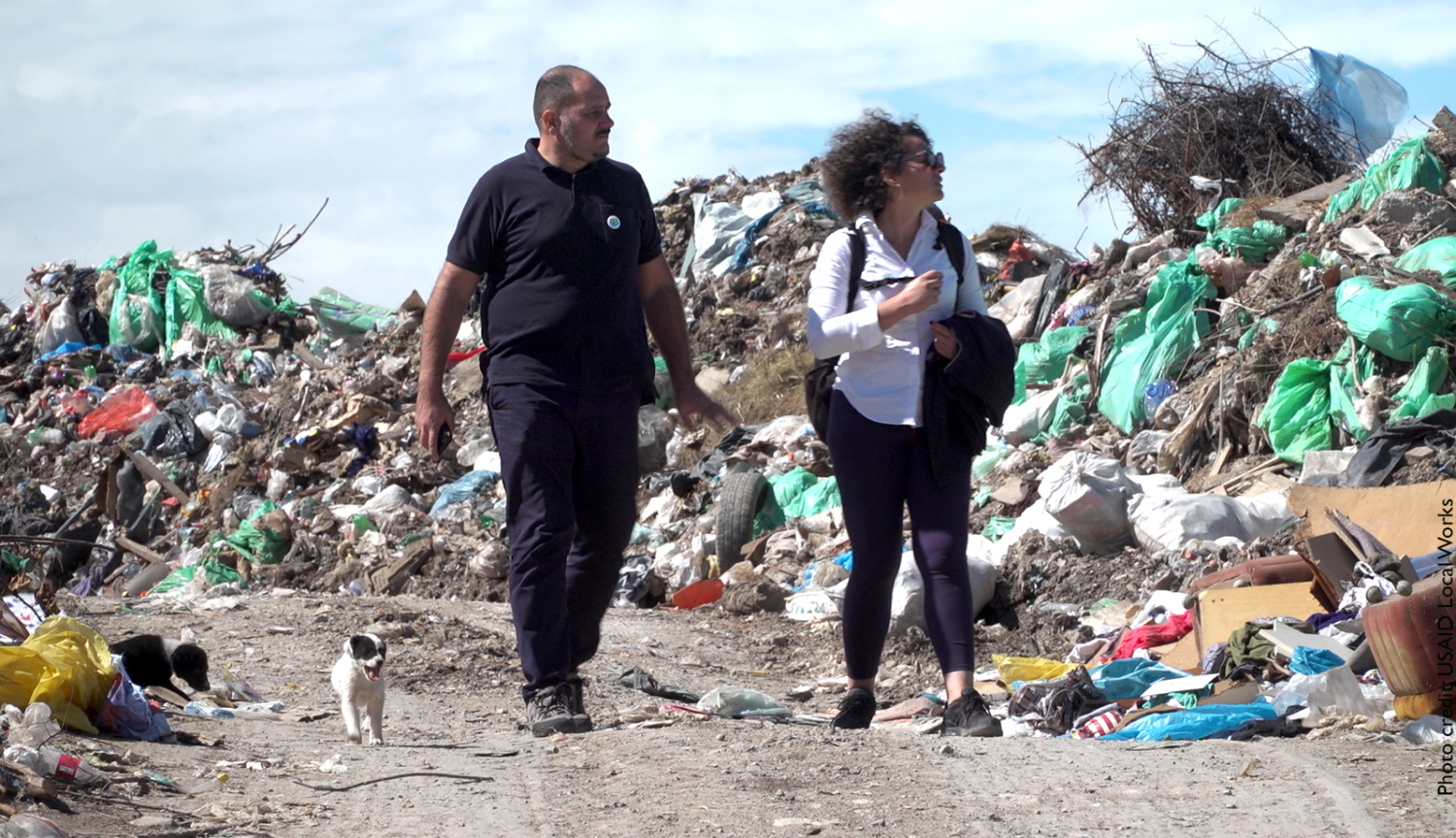Nine Ways Direct Local Partnerships are Good for Development

Agency initiatives over the past several years - including Local Solutions, the Local Works program, and the New Partnerships Initiative - have aimed to boost Missions’ ability to partner directly with local organizations. This goal has become more urgent since Administrator Samantha Power committed USAID to provide at least 25 percent of USAID funds directly to local partners by 2025.
As teams across the Agency seek ways to overcome the many structural barriers to direct local partnerships, it is worth taking a step back to consider why such partnerships are so important. Through its Local Works program, USAID/Serbia has successfully advanced democracy and governance objectives under six activities, all implemented through direct partnerships with Serbian organizations. Their experience carries useful lessons about the development benefits of working directly with local partners. A recent internal evaluation examined this topic, which resulted in the following nine observations.
Note that these conclusions are based on an analysis of 30 interviews with USAID staff and local partners in relation to the Local Works program in Serbia. While they offer insights into the benefits of direct local partnerships that may be generalizable to other country contexts and other types of programming, the sample of respondents is small and limited to one Mission and its partners. As such, this product does not claim that these lessons, or discussions of differences between local and international partners, would hold true everywhere.
1. Local partners have staff with contextual knowledge, which makes for better-fit activity design. There are plenty of individuals working for non-local partners who have experience working in the country where programming is taking place. However, local partners often boast staff who have devoted their careers to a specific issue in a specific context, and understand the ins-and-outs of what has been tried in the past, what has worked, and what hasn’t. Context matters, and while technical experts may have knowledge of solutions that have worked somewhere, those solutions might be a poor fit in the current context. The knowledge local partner staff often possess equips them to avoid these types of pitfalls in activity design.
While international partners may reap some of these benefits by hiring local staff, it is important to consider how much decision-making power local staff really have over activity design and management in that arrangement. Quite often, non-local program leads fail to meaningfully involve local staff in design and management decisions, and these staff are relegated to carrying out decisions made by someone less familiar with the context.
2. Local partners have connections with community-level organizations, which can help USAID reach new and marginalized communities. Local organizations - even if based in the capital city, but especially when headquartered elsewhere - often have existing connections with community leaders and smaller (sometimes informal) organizations. In Serbia, local partners reported that the trust these local individuals have with community members - forged through frequent, personal interactions over time - helps overcome skepticism of outsiders’ motives, a problem especially pertinent in the Serbian context. Leveraging these connections helps USAID improve its reach into communities or regions where international IPs may have trouble working given the lack of well-established relationships with local individuals and organizations.
3. Local partners choose the right consortium partners. While an international partner may need to map the local system of actors around a development issue, local partners are more likely to be familiar with the strengths of other organizations in the local development landscape. In the case of Serbia’s LW program, the Mission issued Requests for Applications (RFAs) around governance-related topics (e.g. rule of law, philanthropy, community engagement in advocacy), and local civil society organizations (CSOs) naturally grouped themselves around those topics. Additionally, since many of these CSOs had worked together in the past on a variety of initiatives, they have relationships that facilitated their collaboration under a USAID activity - contributing to achievement of activity objectives.
4. Local partners’ relationships with local decision-makers can help them work more efficiently and effectively. Local CSOs or private sector firms have often been working in a programmatic area for decades, and have established relationships with decision-makers, such as government officials. This sometimes allows them to make progress more quickly by circumventing formal processes for interacting with these individuals. Leveraging these relationships also equips them to achieve results when decision-makers are resistant to change.
For example, in Serbia, a rule of law activity consisting of direct engagement with the government - implemented by an international IP - had largely stalled in light of the country’s closing democratic space. During the same time period, one of the Mission’s Serbian partners worked with local judges and prosecutors to set up events in which citizens could see the inside of a courtroom and ask these officials questions about the judicial process. Leveraging their relationships with local officials allowed the partner to advance the activity goal of improving judicial transparency, even during a time when the government was resistant to change.
5. When local partners are primes, activity design can better reflect local priorities. While international IPs often bring in local organizations as sub-partners, LW partners reported that this scenario rarely gives them any decision-making power over activity design. Instead, international primes assign local partners a specific role, with little room for adapting that role to better respond to local priorities. In contrast, when local partners are primes, they can participate in activity design processes with USAID, and can interact directly with their USAID AORs to discuss changes in work plans as new opportunities emerge and as programmatic learning occurs.
6. Local partners have a finger on the local pulse. Many development activities fail because they do not respond to what local citizens, communities, businesses, or governments actually want. While international partners can (and often do) take steps to understand local priorities and design programming to respond to those, local partners have a much higher baseline understanding of cultural, political, economic, and social factors that may hinder local buy-in to an activity. Local partners can ask the right questions at the outset of an activity to ensure design is well-tailored to the local context and local needs. Also, they tend to follow policy developments quite closely, allowing them to understand the nuances of why desired policy changes succeed or fail. As one Mission team member shared, “The local partner is dialed in in a way that I would never be, or anybody from Washington could be.”
7. Working with donors builds local partner capacity - a development benefit in itself. While working with local partners unfamiliar with USAID processes is time consuming for USAID staff, the ‘learning by doing’ opportunity helps partners develop the capacity to manage donor funding. These types of skills (for example, producing professional reports and conducting performance monitoring) may not be the most transformational in terms of helping an organization achieve development outcomes. However, these skills do give them experience that helps them win future USAID (and other donor) funding. As one local USAID staff member shared, “There is this non-dollar value of genuinely building civil society. They can then apply to anyone after this.” Local organizations need funds to carry out their work, and while international donor funding is not the only option, equipping partners to access that funding can be transformational in fueling their programming.

8. Local partners often have a higher level of motivation to achieve development results. While international IPs are staffed by individuals who are passionate about doing good development work, local organizations and their staff members seize new opportunities to maximize outcomes for their own communities. Staff members of local CSOs have often built their organizations from the ground up, drawing from a passion for improving their country. They are not simply employees, but activists and innovators driven to find solutions. In Serbia, this led partners to continuously work with USAID to take advantage of emerging opportunities; for example, one partner developed a rapid grants program when they saw the need for a different structure of funding for small, informal initiatives. The Agreement Officer (AO) and Agreement Officer’s Representative (AOR) flexibility was critical in allowing this type of flexibility. Another partner reported carrying out 30 percent more activities in their judicial transparency activity than was anticipated at the time of award.
9. Local partners become part of networks that continue to bear fruit past the end of an activity. A USAID activity provides an opportunity for local partners to build connections with other local organizations - and leverage their existing ones - toward the achievement of activity objectives. The benefits of these local-to-local partnerships don’t stop at sectoral development outcomes. Rather, the process builds strong networks of organizations that may continue working together past the end of USAID funding. This stands in contrast to most international organizations, which close their field offices when funding dries up. One LW partner in Serbia planned to continue work with some of its partners on a new stream of work - outside of USAID funding - to address homelessness, relating, “It’s definitely a coalition that can continue to make an impact.”
While USAID has a role to play in utilizing its convening power to strengthen local networks, it is important to consider that some of the most effective network-building occurs organically when USAID gives partners the opportunity to lead implementation. As one partner shared, “Building networks to build networks is nothing. Building coalitions with shared values and a vision will last. You cannot imagine where a project will end. This project will not end because we have relationships.”
These lessons on the development benefits of local partnerships arose from an evaluation of USAID/Serbia’s Local Works program. The evaluation examines the enablers and constraints to locally led development practices in the Mission. If you have questions, comments, or reactions to this product, we’d love to hear them! Email Amanda Satterwhite ([email protected]) and the Local Works team ([email protected]).



